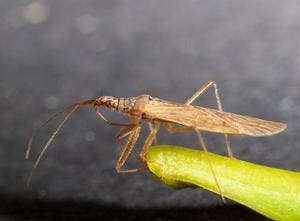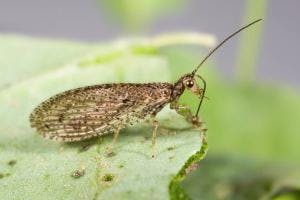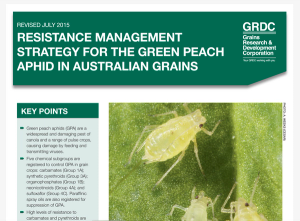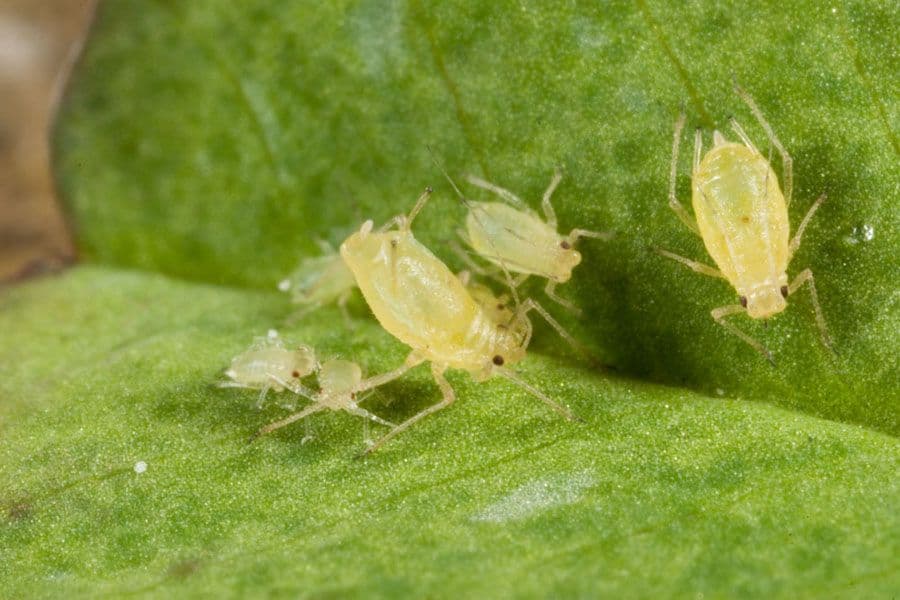
Green peach aphid
Myzus persicae
Summary
Green peach aphids are a soft bodied pest of various broadacre, broadleaf, and horticultural crops. They grow up to 3 mm long and vary in colour from shiny pale yellow-green, green, orange or pink. Adults are oval-shaped, with long antennae, long siphuncles that reach past their cauda, and can be winged or wingless. Winged adults have a dark patch on the abdomen, while wingless adults are usually uniform in colour. Nymphs are similar to wingless adults but are smaller in size.
Aphids can reproduce both asexually and sexually however in Australia, the sexual phase is often lost. Green peach aphids reproduce asexually via parthenogenesis whereby females give birth to live young. Mature females can produce many generations during the growing season.
The optimum temperature for green peach aphids is about 22°C, with most activity occurring during the warmer milder months of the year. Threshold minimum and maximum temperatures for their development are approximately 5°C and 33°C respectively.
Green peach aphids are found sparsely distributed on host plants and do not tend to form dense colonies. They have a preference for living on the undersides of the lower leaves of their host plants.
Damage potential, crop monitoring, and action thresholds
Chemical Management
There are several insecticides registered against green peach aphids. However many populations of green peach aphids have developed resistance to multiple classes of insecticide.
Currently, the green peach aphid has high-level, target site resistance to synthetic pyrethroids and carbamates, making field rates of these chemicals totally ineffective against resistant populations.
There is also widespread, low-level metabolic resistance to organophosphates and neonicotinoids. Metabolic resistance means that resistant populations are able to detoxify chemicals faster than susceptible insects, so whilst control failures might not always be seen, their use is still inherently risky.
Some aphid populations have documented sensitivity shifts to sulfoxaflor. It remains an effective insecticide, however requires strategic application to prevent further sensitivity shifts.
There is currently no known resistance to flonicamid or afidopyropen, which have a unique chemical mode of action that makes them useful for pesticide rotation strategies.
Growers are urged to reduce the risk of further insecticide resistance by: Rotating insecticide classes; Avoiding the use of ‘insurance’ sprays; Applying insecticides only after carefully monitoring and correctly identifying pest species.
A border spray in autumn/early winter, when aphids begin to move into crops, may provide sufficient control without the need to spray the entire paddock.
Resistance
Biological Management
There are many effective natural enemies of aphids. Hoverfly larvae, lacewings, ladybird beetles and damsel bugs are known generalist predators that can suppress aphid populations.
Aphid parasitiod wasps are specialist beneficial enemies that are active all year round, with a single wasp controlling >300 aphids. Parasitoids lay eggs inside bodies of aphids that develop and kill their host. Evidence of parasitism is seen as bronze-coloured enlarged aphid ‘mummies’. If mummified aphids make up 10% of the total aphid population within a paddock, it is likely that the majority of remaining aphids have also been parasitised. This is an indication that the population is likely to crash within 2 weeks. Aphid parasitoids that target green peach aphid include Aphidius colemani and Diaeretiella rapae, and are available to purchase for release.
Naturally occurring aphid fungal diseases (Pandora neoaphidis and Conidiobolyus obscurus) can also affect aphid populations.
Natural Enemies
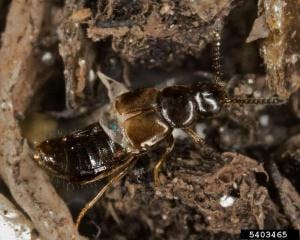
Rove beetles
Family: Staphylinidae
Moderate efficacy
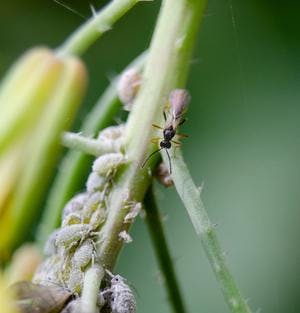
Aphid parasitoids
Order: Hymenoptera
High efficacy
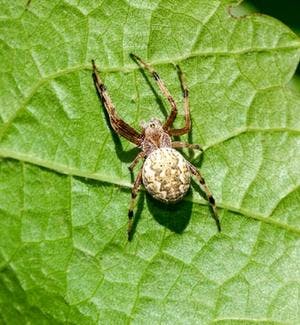
Spiders
Order: Araneae
Low efficacy
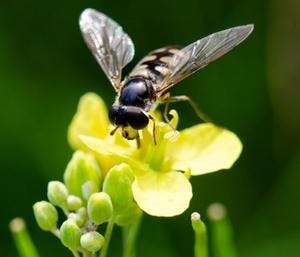
Hoverflies
Syrphidae sp.
Moderate efficacy
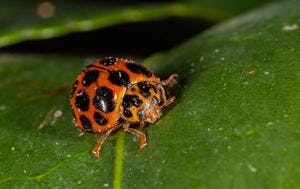
Ladybird beetles
Family: Coccinellidae
Moderate efficacy
Cultural Management
Control summer and autumn weeds that act as alternative hosts between growing seasons, particularly wild radish, wild turnip, capeweed and volunteer lupins. Weeds of the brassicae and asteraceae family may also act as hosts for turnip yellows virus and should be removed. Weedy green bridges should be removed at least 10 days prior to sowing.
Conduct regular monitoring for green peach aphids during the risk season between April and June, when the autumn aphid migration occurs and there are ideal temperatures for aphid survival and reproduction.
Sow into standing stubble to reduce bare ground, as the contrast between soil and leafy plants acts as a visual cue for aphids when migrating into crops.
Resources
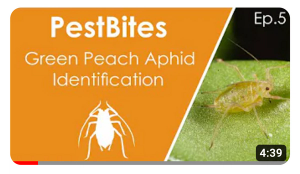
Green peach aphid ID video
Identification
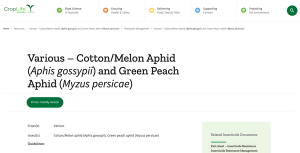
CropLife aphid resistance management strategy
Resistance management
Green peach aphid
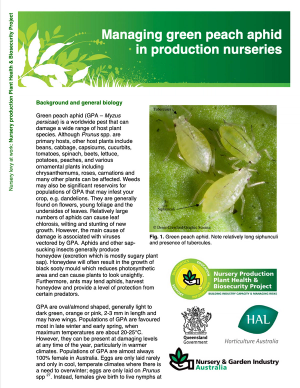
Managing green peach aphid in production nurseries
Green peach aphid
Hort Innovation
Experts
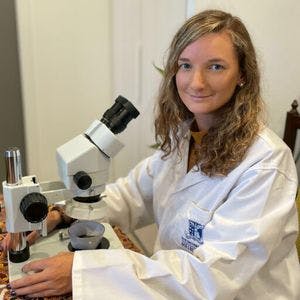
Sam Ward
Green peach aphid
Parasitoids
Beneficial insects

Dusty Severtson
Russian wheat aphid
